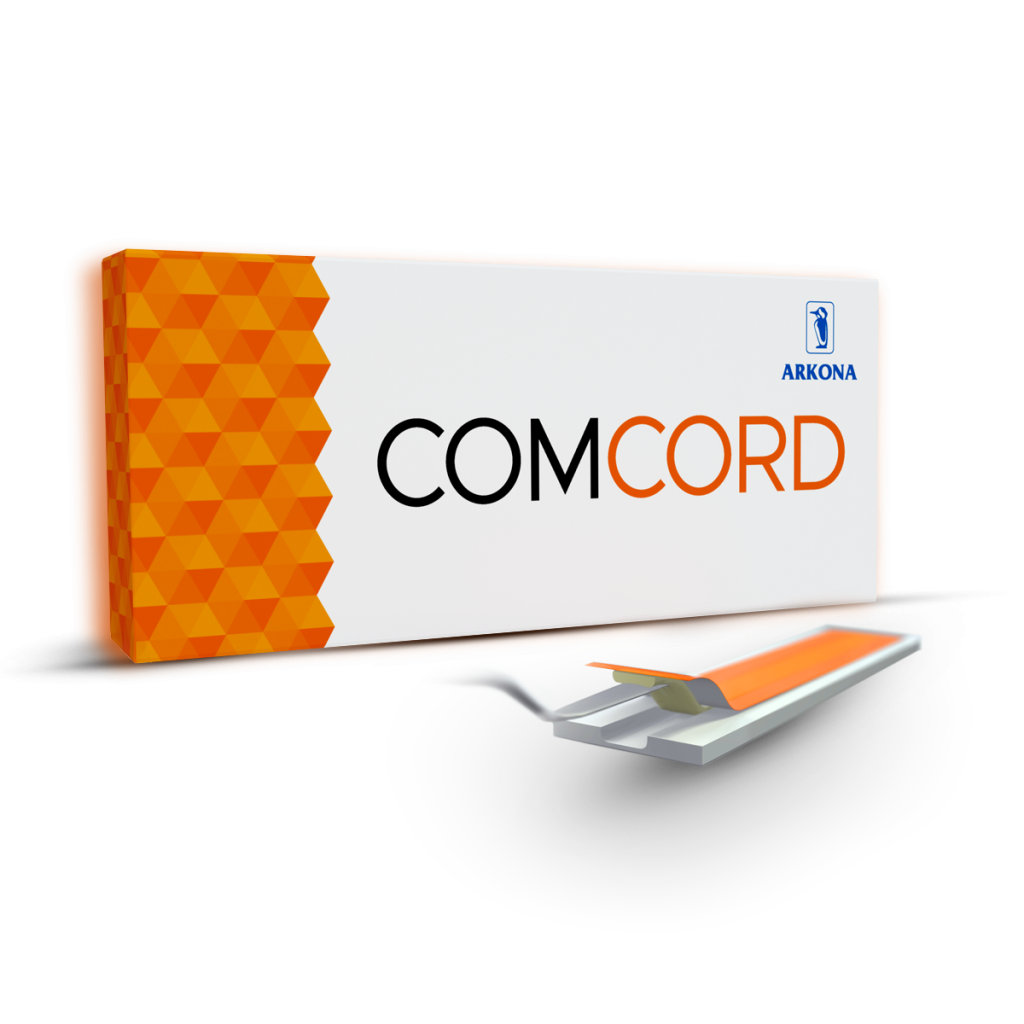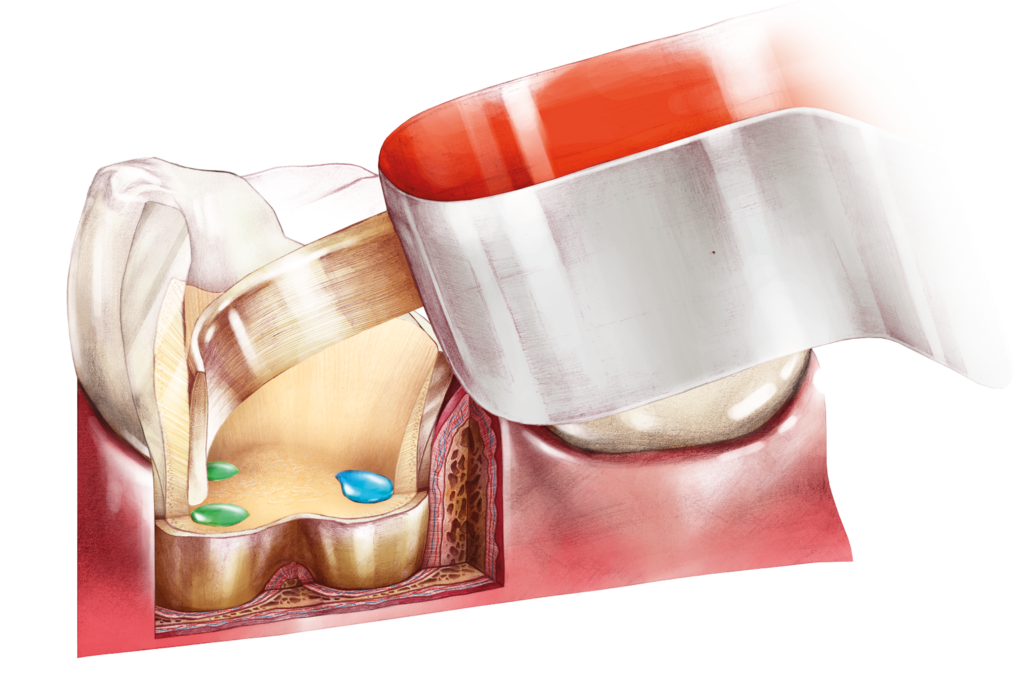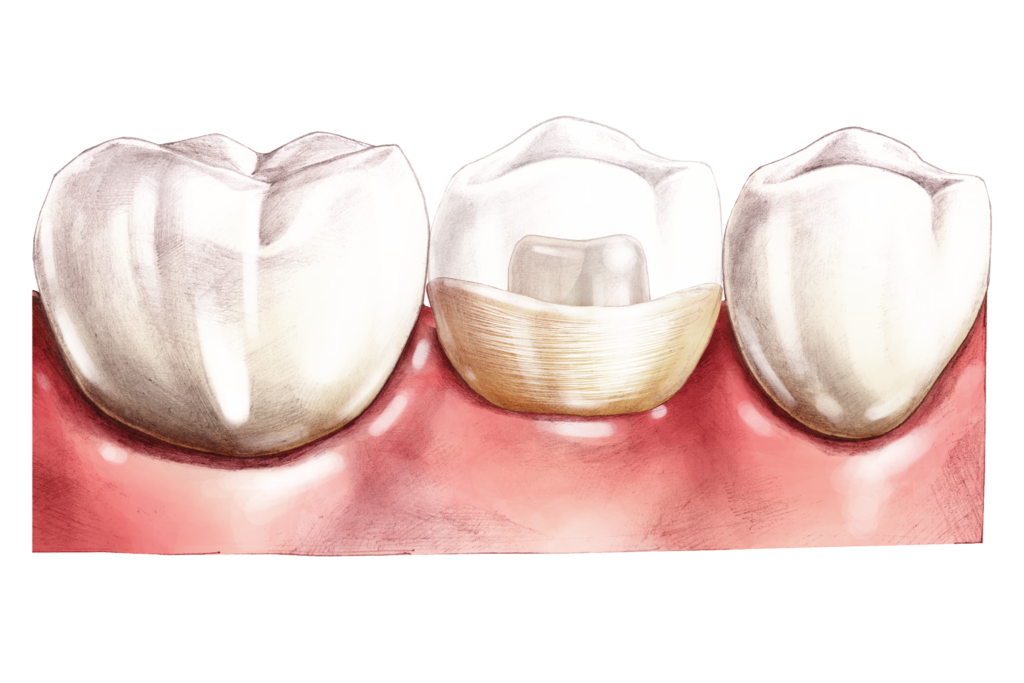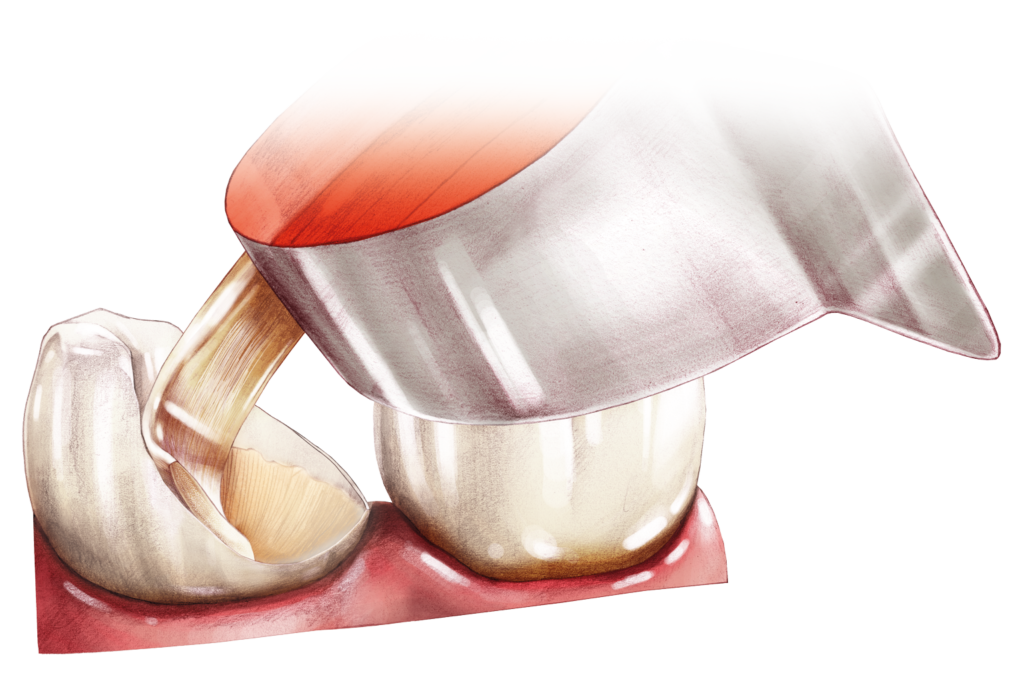







COMCORD increases the strength of large tooth cavity restorations enabling them to last for many years, which is difficult to achieve with composite alone. It allows the immediate restoration of a lost tooth in a single visit. It is an alternative to implants and invasive procedures.
State-of-the-art dental fibre: the world’s only dental fibre containing composite for tooth restoration, making modelling twice as fast as with cumbersome glass fibre.
COMCORD is a ready-to-use product requiring no treatment prior to placement.
We increase the strength of large cavity fillings, especially in posterior teeth, not achievable with composite alone. The parts of the restorations that are most exposed to chewing forces, such as the lower lingual cusps of molars without additional support will fracture. We support either the most exposed cusps, incisal edges or entire chewing surfaces.
We perform immediate restorations of lost teeth in a single visit, often within an hour. We can achieve this by combining COMCORD with your favourite composites. These methods are particularly important when the patient, due to trauma or during normal eating, has lost an anterior tooth and cannot function normally without it. Fibre-supported composite restorations are the only one method of restoration completed in one visit, especially as we can perform it ourselves.
Thanks to non-invasive fibre composite restorations, we also restore missing teeth for patients who do not agree to implants, are afraid of surgery or injections or do not want to grind adjacent teeth.
We provide support for fixed composite restorations such as inlays/onlays, crowns, endocrowns and bridges. The old generation of fibreglass was uncomfortable as doctors didn’t like working with it and many of us became discouraged for years after. COMCORD is made of UHMWPE filaments, non-compressible fibres and is very flexible. The fibres are the only ones in the world to contain composite, making modelling extremely easy and fast. Thanks to the composite-fibre-composite construction, we apply three layers at the same time and the fibre does not straighten, but retains the shape we gave it.
We carry out complex work, especially in difficult occlusal conditions. Often these are temporary bridges with extended durability for the healing period after implant surgery.
We stabilise teeth, periodontally loosened or due to traumatic reasons. Depending on your needs, these will be permanent or temporary splints. Thanks to the composite content in the fibres, modelling progresses several times faster than with old glass fibres.
We restore single missing teeth by splinting adjacent teeth. Many cases of periodontitis are accompanied by tooth loss. In such cases, we make a stabilising splint, where in place of the lost tooth we attach the patient’s own tooth or a ready-made acrylic or composite crown, or model the missing tooth with composite. All methods are equivalent and all use a composite fibre splint.
We make orthodontic retainers as an alternative to metal retainers, which are unsightly and difficult to maintain at home hygienically.
1 pc., length – 60 mm | width 2.5 ± 0.2 mm | thickness 0.7 ± 0.1 mm
How and with what to cut COMCORD?
COMCORD should always be cut with the cover and orange protective foil.
To cut COMCORD you need to use special scissors (https://arkonadent.com/nozyczki/ ) or a good scalpel/disposable blade, placing the product on a hard surface or glass backing. Cutting with blunt instruments may result in destruction of the COMCORD microstructure.
How to store COMCORD?
COMCORD should be stored in its original packaging at a temperature below 25°C.
COMCORD retains its properties for up to 3 months after opening, provided it is stored at a reduced temperature (3°C to 5°C).
What color is COMCORD?
The composite constituting the matrix of polyethylene fibers has a shade of A2.
How thick is COMCORD?
The thickness of COMCORD is approx. 0.7 mm (±0.2)
How is COMCORD different from CHORDS?
COMCORD consists of parallel polyethylene fibers placed in a microhybrid composite matrix with increased mechanical strength.
CHORDS takes the form of a ribbon (weave) of polyaramid fibers and requires the use of a composite.
What kind of fiber is this?
COMCORD is a system of 1056 UHMWPE filaments (thin polyethylene fibers with a diameter of approximately 10-20 micrometers each).
How quickly does the composite set in COMCORD?
COMCORD is best polymerized in sections no longer than the diameter of the polymerization lamp fiber optic cable (i.e. 5-8 mm), covering the fiber sections not currently exposed with orange foil (i.e. not removing it prematurely) – proceed as for Chords.
COMCORD has a shade close to A2 and cures without any problems under the light of a dental lamp with a standard wavelength range of 400-500 nm (visible light, blue).
Each COMCORD fragment should be exposed for about 20-30 seconds. If there are any doubts as to whether the light reaches all the reconstruction fragments (e.g. in complicated courses), the exposure time can be extended to 40 seconds, or at the very end, the entire reconstruction can be exposed once more.
Is etching and bonding required prior to COMCORD placement?
Yes. In this respect, COMCORD restorations can be treated approximately like work with composite material alone, i.e. each time the surface of the tooth(s) must be prepared in the standard way by etching it and applying a bonding system.
Does COMCORD require any additional procedures before use?
No. COMCORD is a ready-to-use product. The only procedure that may be required is cutting to the required length (if necessary at all, see point 6). Nothing else needs to be done with it. Simply remove it from the casings, adjust/form it and polymerize it.
Is it necessary to make a groove on the teeth?
The method of using COMCORD can be any, with or without grooves. It should be remembered that bonding systems bond better to enamel than to dentine, therefore the enamel should not be damaged too much. In the case of a high degree of tooth loosening (degree III), grooves may be necessary.



Dowiedz się więcej! Kliknij tutaj
Information
In accordance with the applicable law, this website and its content presented on it are intended solely for professionals in the field of medical devices, i.e., in particular persons practising a medical profession or trading in medical devices and their employees or associates, as they contain advertising messages for products intended for use by users other than laypeople.